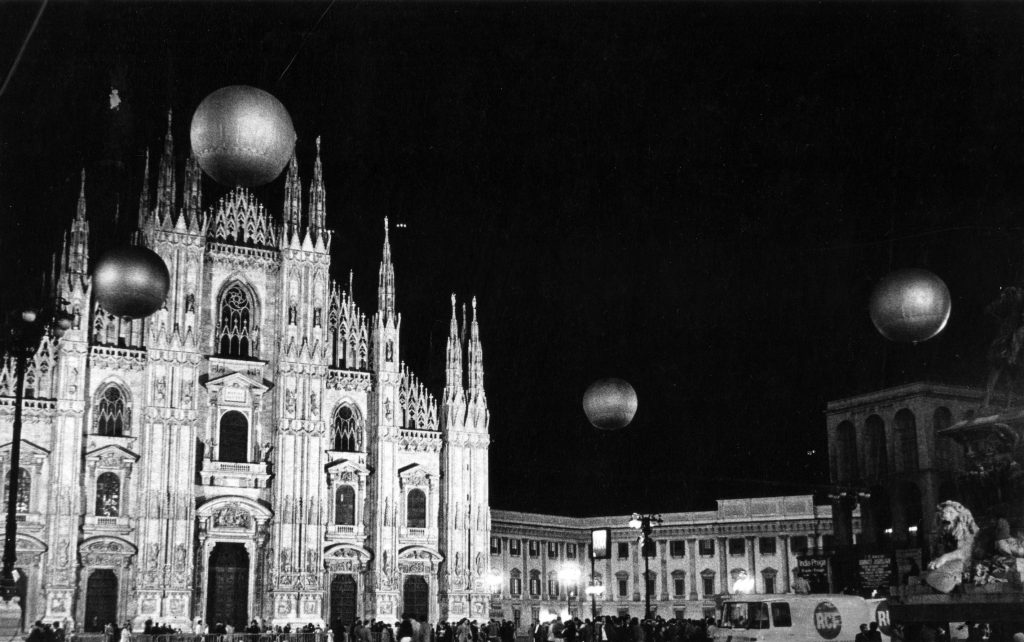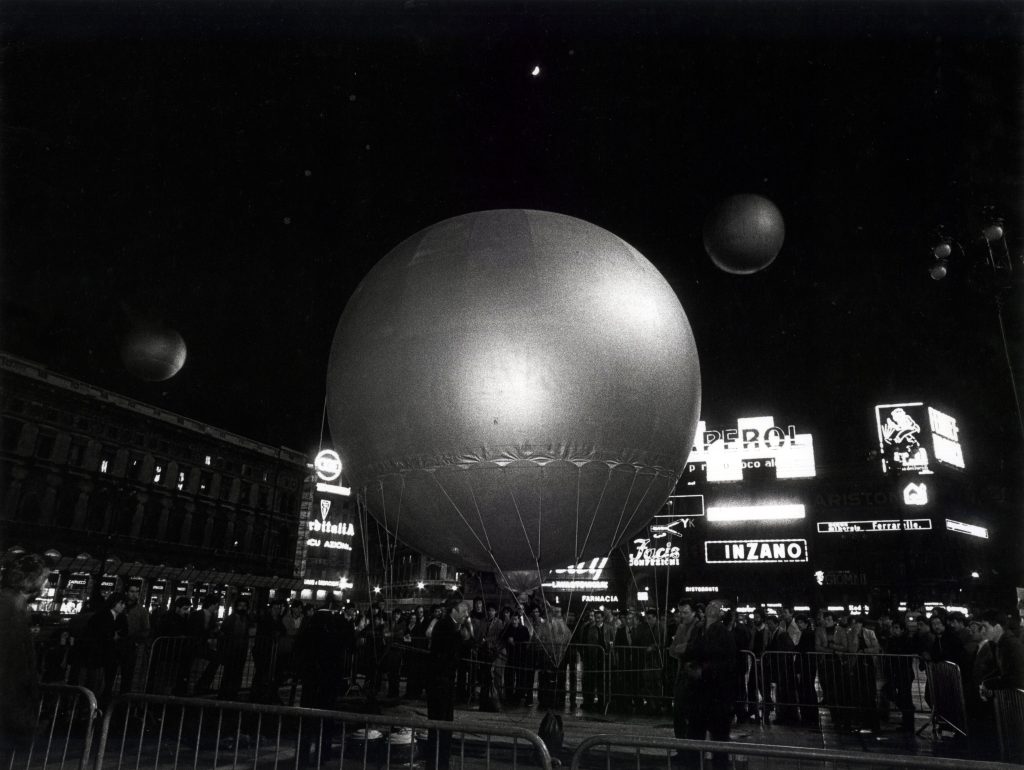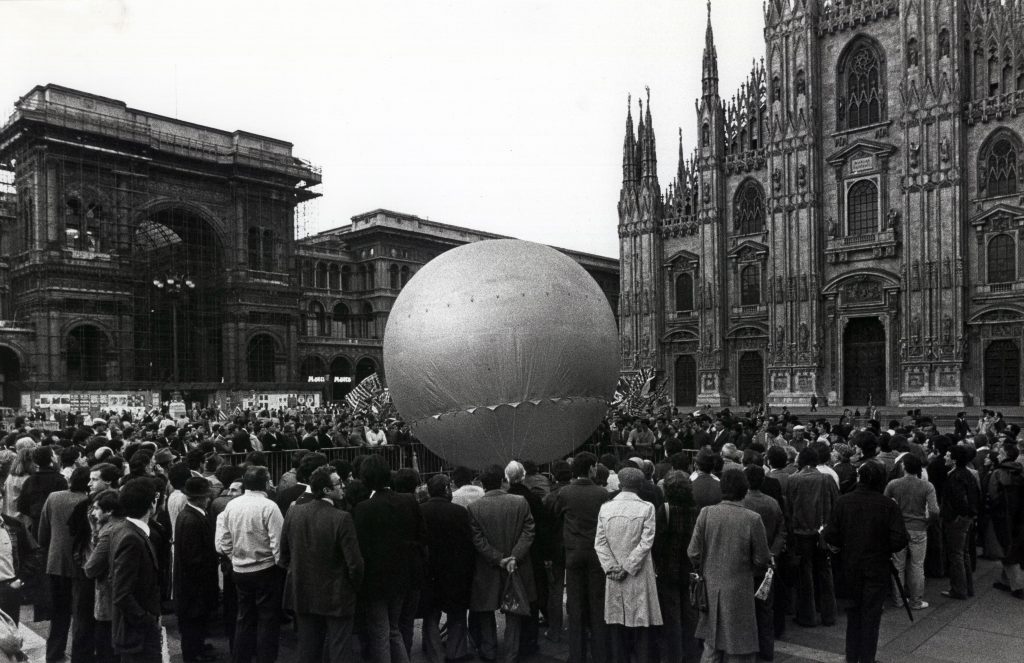May 2nd, 1979, Piazza del Duomo, Milan

In order to define the space and to direct the attention towards the sky, four silver colored balloons were placed at the respective corners of the square and were anchored at a height of 30 meters from the ground with the help of thin ropes. The balloons, 6 meters diameter each, were filled with approximately 400 m3 of helium. Four loudspeakers were hidden behind the four balloons respectively.
The literal, and not the allusive, aspect of the title required a resonant illustration of:
1) direct celestial provenance
2) human musical experience

As reported by Prof. Gavazzi of the Laboratory for Cosmical Physics CNR of Milan, cosmic resonant waves do not arrive to us. Instead we receive electromagnetic, radio, or light waves from everywhere. To catch radio waves with the help of a radio telescope and then to convert them into ‘musical’ language would not be very appropriate: since the intensity of the signal almost does not vary its modulation, there would be a continuous noise present. On the other hand, a photographic image obtained by telescope contains a lot more information: each one of its points has two spacial coordinates, a determined brightness, and a respective chromatic value. The group for Mathematic Calculation at the CNUCE (Institute of the National Research Council) of Pisa – P. Grossi, M. Chimenti and L. Azzarelli, has determined the parameters for the interpretation of color slides of the nebulae ‘Lyra’ and ‘Orion’ and of the ‘Andromeda’ galaxy.

The choice of the acoustic parameter derived from the resonant capacity of the TAV-2 computer (an audio terminal used in the musicology section at that time). The horizontal and vertical interpretation of each slide was being transformed into numerical values, which were then ‘translated’ into sounds by the computer, trying as much as possible to avoid the choices which based themselves on personal criteria. Music has always something to do with human feelings and the associations that it provokes are deliberate and – more or less – manipulated by the composer. In this case, however it was a translation, albeit an arbitrary one. For this very reason it was considered not as music but as a ‘celestial’ resonant material, which was to be heard from the sky.
The first part contained the material described above. For the second part a program of human musical poetics was being chosen, together with the RAI (Italian national radio and television company) musicologist Giovanna Motta.
For the first time, the earth was saturated by a ‘shower of music’, including:
‘The Epitaph of Sicilo’ (ancient Greece).
‘Deus Creator Omnium’ by St. Ambrose (386 AD).
‘Ja Nus Hons Pris’ by Richard I, Lionheart (1100).
‘Possente Spirito’ from ORFEO by Monteverdi.
‘Largo’ from ‘Concerto in Re-Maggiore’ for flute and strings Op. 10 No. 3 by Antonio Vivaldi.
‘Preludes’ from TRISTAN UND ISOLDE by Richard Wagner.
‘Danses sacrées et profanes’ by Claude Debussy[1].
[1] Misheff, A., Projects and paintings – 1979/1989, Milan, Mazzotta ed., 1989.